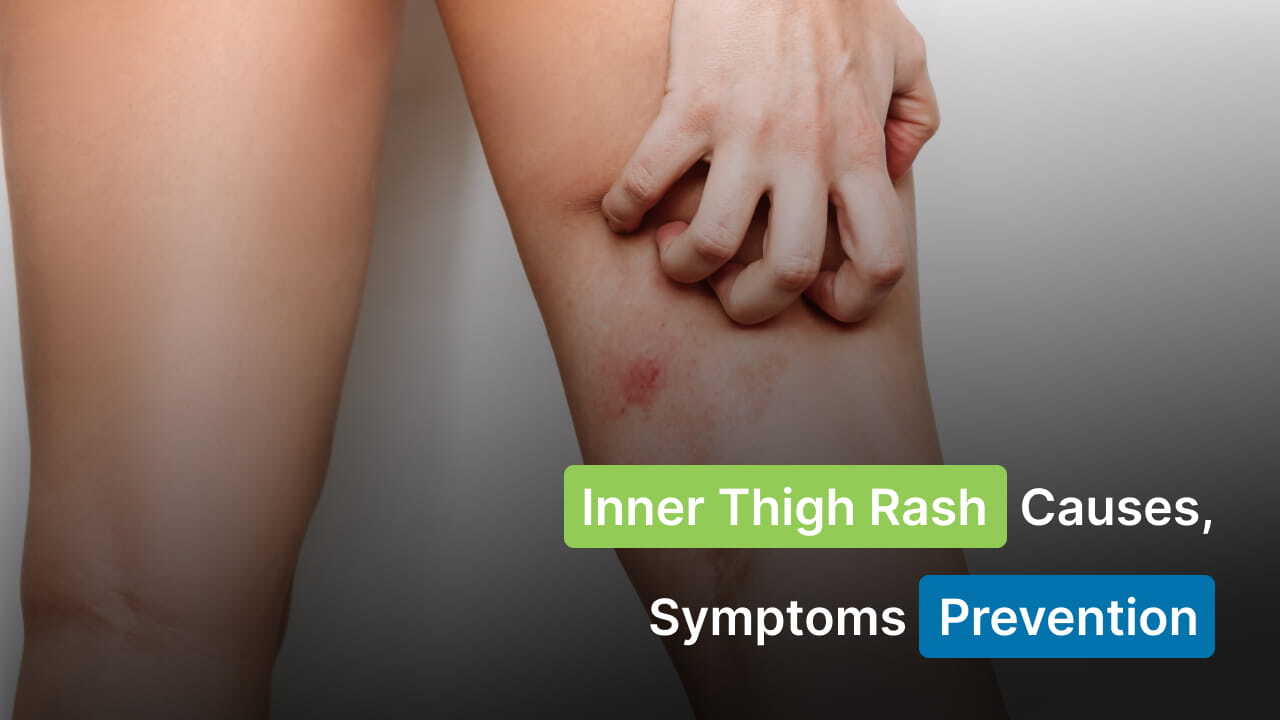
RDW, or red blood cell distribution width test, is used to test or measure the difference of your red blood cell in terms of size and volume. Not only this, the test is also used to determine many blood-related diseases and disorders.
RBC's main function is to move oxygen from the lungs to other body parts through a protein called hemoglobin to maintain health, growth, and reproduction.
It is important to have an adequate size of RBC so it does not affect their ability to deliver oxygen to tissues and organs.
The RDW test is an important part of a complete blood count (CBC), performed to measure the amount of white blood cells, red blood cells, and platelets present in your blood.
Keep reading this article to explore everything about the RDW test, why and when they are done, and interpret the results in various ranges.
What Is The RDW Test?
RDW blood test is an essential component of CBC and is performed to measure the variations in sizes and volumes of red blood cells between small and largest red blood cells. It is also called the RDW-SD (standard deviation test) or erythrocyte distribution width.
The adequate size of RBC is important for good health. The normal size ranges between 6.2 to 8.2 micrometers (µm) in diameter with a disc shape.
Having high variations in the size of cells can be a sign of anemia, a condition that can distract the movement of oxygen to other body parts.
Low and normal values of red cell distribution width (RDW) indicate that they are uniform in size, while higher values indicate that they are different in size, which can cause some issues with your health.
Sometimes, this test is advised by a doctor to figure out hematological disorders or diseases like anemia, nutritional deficiencies, or cardiovascular disease.
The result of the RDW test can also depend on the results of MCV and MCHC levels (mean corpuscular hemoglobin concentration).
When Will The RDW Test Be Needed?
The RDW blood test is mostly prescribed in complete blood count (CBC), which is used to diagnose diseases like anemia or other symptoms that help your healthcare provider determine other health issues. There are various other reasons, including:
Symptoms
RDW test is generally advised as a routine test or due to the presence of the following symptoms:
- Fatigue.
- Cold or weak feelings.
- Difficulty in breathing or short breathing.
- Pale or dry skin.
- Headache.
Conditions
An RDW blood test is performed with other blood cell tests to determine the other symptoms of other diseases like:
- Cancer.
- Cardiovascular disease.
- Kidney disease.
- Liver disease.
- Thalassemia.
- Chronic illnesses (diabetes and HIV).
- Vitamin and mineral deficiencies (vitamin B12, iron, and folate).
The result of RDW is just one part of CBC. CBC also includes many measurements related to your red blood cells. The other measurements include:
- Mean Corpuscular Volume (MCV): This test is performed to analyze red blood cells's average size.
- Mean Corpuscular Hemoglobin (MCH): This test analyzes the amount of hemoglobin present in each blood cell to carry oxygen.
- Mean Corpuscular Hemoglobin Concentration (MCHC): This test is performed to analyze the amount of hemoglobin concentration relative to the RBC size.
Can the RDW Test Be Performed At Home?
Yes, the CBC tests, which also include the RDW tests, can be quickly done at home using at-home testing kits, which include the tools and manual on how to collect your blood sample using a finger prick.
After collecting your blood sample, it is sent to a lab to determine further your overall health condition, including the amount of WBCs, RBCs, etc. The results are generally sent through email or an online health platform in 2 to 3 days.
For an accurate interpretation of your test results, it is essential to share them with a healthcare provider familiar with your medical history and condition.
How To Prepare Yourself For The Test?
As stated above, RDW is a component of CBC for taking some blood drops from veins. The test can be performed at home using a finger prick, which is collected in a tube and further sent to a certified lab.
If you need to learn about how to prepare yourself for the test, here is your guide for before, during, and after the test.
i). Before the RDW Test
There is no specific preparation needed before the RDW blood test. However, you may be asked to fast for several hours before the test if your doctor has recommended some other blood test with the RDW.
If you are testing it at home, do it before having breakfast, but it is optional to do fasting.
ii). During the RDW Test
The RDW test is a simple, quick, and painless process of just 5 minutes. It is just a process of taking blood drops from your veins through a small needle and storing it in a glass tube.
Then, this tube is sent to a lab for further determining the variations in size and volume and other related diseases.
If you are testing it at home, your testing kit will include a medical manual of instructions for testing. It will consist of a collection tube, antiseptic wipe, and lancet. Stab your finger with a lancet and drop some blood drops into the tube.
iii). After the RDW Test
After taking the blood sample, cotton is swabbed on the injected area for some time to avoid bleeding. You may experience bruising, nausea, continuous bleeding, or fainting.
If you are testing at home, the kit comes with a finger prick, which collects very little blood drops, which may rarely have side effects.
How are the RDW Results Interpreted?
The normal width range of red cells in women is 12.2% to 16.1%, while men have 11.8% to 14.5%. People having a width more than or less than this range is a sign of nutrient deficiency, infection, or any other disorders.
Also, if one has the normal RDW range, they can still relate to a medical condition.
To diagnose the proper result, the doctor may recommend a mean corpuscular volume test and other blood cell tests to advise the correct treatment. The RDW results are interpreted in 3 ways:
1. High-Value Results
If your RDW blood test is high, it indicates that your body produces RBCs in small amounts, and the cells it produces are larger than what's considered normal.
The RDW-SD high result can be due to various factors like deficiency of vitamin B-12 or folate, which can also cause macrocytic anemia.
To properly find the disease and measure your RBC volume and size, your doctor will perform CBC tests along with RDW and MCV test portions.
Causes of High RDW
Several factors can be responsible for a high RDW:
- Iron Deficiency Anemia: Produce smaller and larger RBCs.
- Vitamin B12 Deficiency: Create variations in RBC size.
- Chronic Diseases: Conditions like kidney disease, chronic inflammation, and bone marrow disorders affect RBC production.
- Hemolysis: In conditions like hemolysis, red blood cells get destroyed, which can lead to increased RDW.
2. Normal Value Results
If, as a result, your RDW value comes out to be normal, it means your cells are similar in size and volume, which ranges from 12% to 15%. But if the test also determines that you have low MCV, it may be anemia caused by chronic kidney disease.
On the other hand, the normal value of RDW with high MCV may be aplastic anemia, a condition of blood disorder that does not create enough RBCs.
3. Low-Value Results
If, as a result, your RDW value comes out to be low, then there is no cause for concern and no particular hematologic disorders linked with a low-value RDW.
Causes of Low RDW
Several factors can be responsible for a low RDW:
- Chronic Diseases: Conditions like chronic liver disease lead to low RDW levels.
- Nutritional Deficiencies: Nutritional deficiencies of iron or vitamin B12 can cause lower RDW levels.
- Bone Marrow Disorders: Bone marrow's ability to produce RBCs can lead to low RDW levels.
How to Lower High RDW?
If you have high RDW blood test levels, lowering is important to prevent other diseases. Depending on the actual cause, your doctor may recommend you take some measures:
- Eating a balanced diet: Eating a nutrient-rich and balanced diet is important for preventing iron, vitamin B12, and folate deficiencies, as these deficiencies can cause high RDW levels.
- Stop smoking: Smokers have higher levels of RDW. So, quit smoking to help reduce RDW, and it is also good for overall health.
- Prevent chronic diseases: People suffering from specific chronic diseases must manage their disease to bring RDW levels back to normal.
- Avoid alcohol: Regular drinking of alcohol can harm your RBCs' health and decrease the amount of vitamin B12 and folate absorption.
- Get enough sleep: According to a study conducted in 2015,17,000 participants show that sleep less than 7-8 hours can associated with a high level of RDW.
- Regular exercise: Inactive people have high RDW levels. According to a 2015 study, weekly workout sessions are linked to lower RDW risk.
How Much Does The RDW Blood Test Cost?
RDW is an element of CBC that evaluates many aspects of your blood with overall health. The cost of a CBC test can vary depending on how you executed your test, whether via a home kit, an online order for a lab test, or getting the test from a healthcare professional in a clinic.
For example, if you choose the online test, it can be done for around $37; for a wider panel, the test cost can rise to $114. Remember, the test cost may also depend on your insurance coverage and deductibles, so remember to check them before you proceed with the test.
Conclusion
Hopefully, from the above article, you now know everything about RDW. RDW blood test helps analyze anemia and other health conditions.
It can be recommended as a routine test with a complete blood count (CBC), mainly for adults 45 years or older. This simple and easy-to-perform test's primary purpose is to find the difference in volume and size of RBCs.
The RDW blood result can be high, low, or normal. A high RDW level can indicate certain types of anemia or other chronic conditions, while a low RDW level is not a concern.
It is recommended not to ignore the results and symptoms and to proceed with early treatment to prevent further disorders.
To manage your RBC count, you can take many measures, such as eating a nutritious diet, regular exercise and sleeping, and changing your lifestyle, such as avoiding smoking and drinking.
FAQs
1. What is the normal range of RDW SD?
Ans: The general range of RBC count in males is 4.7 to 6.1 million cells/mcL, while in the case of women, the range is 4.2 to 5.4 million cells/mcL.
2. Can high RDW levels cause cancer?
Ans: High RDW can cause colon cancer and can be the cause of malignant biliary obstruction. It is also assumed that it can lead to lung cancer and multiple myeloma.
3. What is better- low or high RDW?
Ans: It is better to have a low RDW level because your size and volume of red blood cells are similar, and there is nothing to worry about.
4. What are the most common causes of high RDW?
Ans: Hemolysis, blood transfusions, or deficiencies in iron, vitamin B12, or folate may cause high RDW levels.
Read Also:























